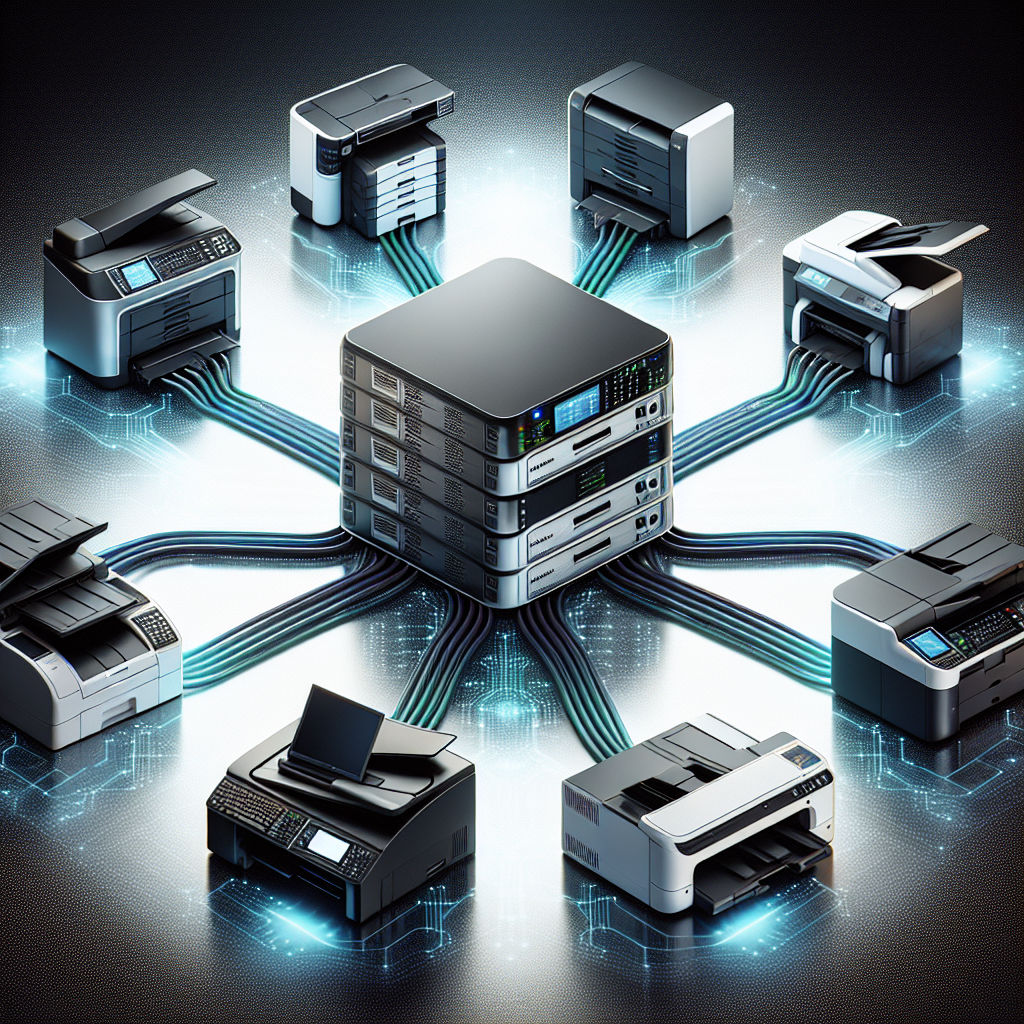Introduction
Managing multiple printers in an office or large workplace can be challenging. Enter the print server – a device designed to streamline printer management, centralizing control, and reducing complexity. But can a print server be used with multiple printers? Let’s explore this topic in-depth.
What is a Print Server?
A print server is a device or software application that connects printers to client computers over a network. It enables centralized management of print jobs, allowing multiple users to send print requests to various printers.
Types of Print Servers
Print servers come in different forms, each with specific functionalities:
- Hardware Print Servers: Standalone devices that connect to printers via USB or parallel ports.
- Software Print Servers: Applications installed on a networked computer acting as the print server.
- Cloud-Based Print Servers: Hosted services offering print server functionalities over the Internet.
Comparison Table: Types of Print Servers
| Type | Connectivity | Key Features |
|---|---|---|
| Hardware Print Server | USB, Parallel Ports, Ethernet | Standalone, Doesn’t Require PC |
| Software Print Server | Networked Computer | Flexible, Runs on Existing Hardware |
| Cloud-Based Print Server | Internet | Remote Access, Scalable |
Can a Print Server Be Used with Multiple Printers?
Yes, a print server can be used with multiple printers. Here’s how it works:
Network Configuration
The print server is configured on the network and connected to multiple printers either directly (in the case of hardware print servers) or through the network (for software and cloud-based servers). Users can then send print jobs to the print server, which directs them to the appropriate printer.
Advantages of Using a Print Server with Multiple Printers
- Centralized Management: Simplifies administration by centralizing control over multiple printers.
- Improved Efficiency: Balances print loads across multiple devices, reducing wait times.
- Cost-Effective: Reduces the need for individual printer connections.
- Enhanced Security: Facilitates better control over who can access and use printers.
Setting Up a Print Server with Multiple Printers
Here’s a step-by-step guide to set up a print server with multiple printers:
Step 1: Choose the Right Print Server
Select a print server based on your environment’s requirements. Consider factors like the number of printers, the volume of print jobs, and network infrastructure.
Step 2: Connect Printers to the Print Server
For hardware print servers, connect printers using USB or parallel ports. For software or cloud-based options, ensure printers are network-ready and connect them through the network.
Step 3: Install Print Server Software
Install the necessary software on your server or computer. For cloud-based servers, sign up and configure your account.
Step 4: Configure Print Server
Follow the setup process to add printers and configure settings. Assign printers to different network users as needed.
Step 5: Test the Setup
Send print jobs to ensure everything is working correctly. Make adjustments if necessary.
Troubleshooting Common Issues
Even with the best setup, issues may arise. Here’s how to troubleshoot common problems:
Connection Issues
If printers are not connecting to the print server, check cables, network settings, and ensure drivers are up-to-date.
Print Jobs Not Processing
Ensure the print server is configured correctly and there are no network bottlenecks. Clear print queues if necessary.
Access Problems
If users cannot access printers, verify their permissions and ensure the print server software is properly configured.
Conclusion
Using a print server with multiple printers offers numerous advantages, from centralized management to increased efficiency and security. By following the proper setup and troubleshooting steps, businesses can streamline their printing processes and boost productivity.
